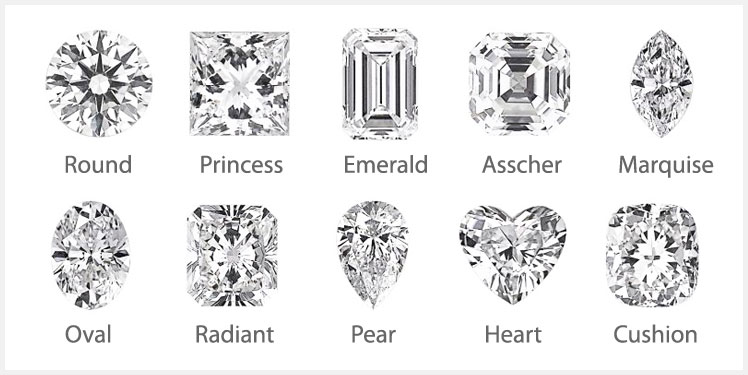
- Diamonds
- Engagement
- Wedding
- Jewelry
- Watches
- Services
-
Toggle Search Menu
-
Toggle My Account Menu
Login
Don’t have an account? Sign up now
-
Toggle Shopping Cart Menu

Don’t have an account? Sign up now
For centuries, men and women have used diamonds to express their emotions and symbolize their enduring love. While the sparkle and brilliance of a diamond are apparent, choosing the right one that fits both your style and budget can be an overwhelming process. At Peter & Co. Jewelers, we’re here to help! We’ll provide you with all of the diamond facts that you need to find the stone that is perfect for you, and that special someone.
To establish a diamond’s quality, jewelers examine the Four C’s – cut, clarity, carat weight and color. When looking at the combination of these four attributes, jewelers are able to determine the quality of a particular diamond, as well as its value. Diamonds with more unique qualities are assigned higher values.
When you begin shopping for a diamond, it’s easy to get swept away. As a symbol of love and eternity, naturally, you want to find the best. The great news is that because all diamonds have unique qualities, they can be found in a range of prices. When you come to Peter & Co. Jewelers, we’ll help you sort through the details so that you can find a diamond that suits both your taste and your budget, as well as finding the right precious metal for your diamond.
A diamond's size is measured in carat weight with each carat being equal to 0.2 grams. Larger diamonds are found relatively infrequently in nature, which generally makes them more valuable. That said, you can’t always judge a diamond by its size. While larger diamonds are highly prized, the exact value of the diamond will vary greatly depending on its clarity, color, and cut.
Clarity measures the number, size, and impact of natural imperfections, or inclusions, within a diamond. Virtually every natural diamond contains imperfections, yet many are only visible under the magnification of a 10x jeweler’s loupe. These are nature’s birthmarks and they may look like crystals, clouds or feathers. Diamonds that are rated as internally flawless reveal no such inclusions and are placed at the highest value. As the number and size of inclusions within a diamond increases, it is considered less rare which decreases its overall value.
Diamonds are graded by color, starting at D and moving through the alphabet to Z. While diamonds appear to be white, virtually every diamond contains hints of color that can rarely be seen by the naked eye. Diamonds graded D, E and F fall into the colorless range of the scale. These diamonds are considered very rare and as a result, are assigned a higher value. When assessing the color of a diamond remember that its other qualities continue to play an important role. A well-cut diamond of good clarity can be dazzling, even if it is not considered colorless.
The cut of a diamond determines how it interacts with light. While nature determines a diamonds clarity, carat weight and color, the hand of a master craftsman are necessary to release its fire, sparkle, and beauty. When a diamond is cut to good proportions, the light will reflect from one facet to another and disperse through the top of the stone. This gives a diamond its true brilliance. If a diamond is cut too shallow or too deep light will be lost, escaping through the sides or bottom of the stone. Consequently, a poor cut will decrease the value of a diamond.
While the cut of a diamond determines its ability to interact with light, the shape of a diamond refers to its actual appearance. When choosing a shape for your diamond, consider the style that you are looking for and any other accents that you want to be included in the ring. Each shape has its own unique qualities, but ultimately it’s important to find a diamond that you and that special someone can cherish forever.

|
Learn how we use cookies in our Privacy Policy or manage cookie preferences. |
|
|
|
|